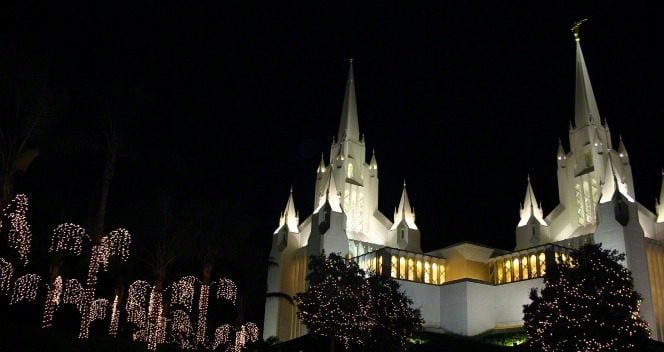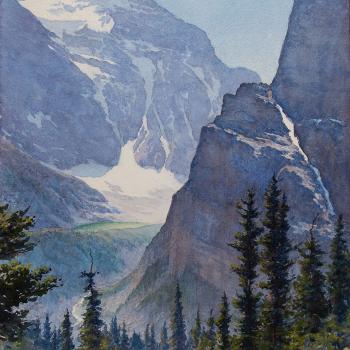
My wife and I attended a session in the San Diego California Temple today.
We’ve done so several times before.
I still remember the first time I saw it, when it was nearing completion. We drove down with my parents from greater Los Angeles (for, among other things, a visit to a paternal uncle). We knew roughly where the new temple was, and that it was supposed to be visible from the freeway. So we scanned the hills, right and left, as we arrived in the general vicinity. We didn’t want to miss it.
It turns out that you can’t. Or that, if you can, you shouldn’t be driving.
Anyway, over the years I’ve had a thought recur to me in connection with the vicarious work for the dead that’s done in Latter-day Saint temples. I may have mentioned it before, but I’m intending to do so now in any case.
One of the great achievements of the twentieth century was the application of industrial methods to the systematic extermination of mass numbers of humans.
I’ve referred numerous times to my father’s involvement, along with elements of the Eleventh Armored Division, in the liberation of the Nazi death camp at Mauthausen, Austria. It was a pivotal event in his life, and we spoke about it on many occasions. So the phenomenon of the concentration camp has had a personal interest for me since I was a child.
And then there is the Soviet Gulag, so horrifyingly chronicled by the great Aleksandr Solzhenitsyn, whom I read extensively in high school. And Mao’s “Cultural Revolution.” And the Cambodian “killing fields.” And the Rwandan genocide. And the great Ukrainian “terror famine.” And on and on and on.
I’ve felt it a duty to visit such places as Mauthausen, and Gusen, and Buchenwald. And the Holocaust Museum in Washington DC. And Yad Vashem, in Jerusalem. These visits are horrible, but, to me, they’re necessary.
One of the most haunting places in Yad Vashem is a hall of records containing the names of Holocaust victims. Book after book after book after book. But just as horrifying is the acknowledgment in that hall that there are entire Jewish villages and towns that were entirely wiped out. No records survive. We don’t even know the names of those who died.
The Nazis’ goal was not only extermination or liquidation. It was erasure. And so it has been with other totalitarian regimes.
And I contrast to that the vicarious work of the temples, where we try to remember and to devote individual attention, so far as we’re able, to everybody who has ever lived. No matter how obscure or insignificant.
This morning, my wife was assigned the name of a French woman who lived in the late 1500s. I received the name of a man named Joshua Wilson, who was married in Pope County, Illinois, on 5 August 1830.
I tried to imagine his life. He was, I’m guessing, most likely born around 1805 or 1810. That would have made him a bit old to have participated in the American Civil War — during which Pope County, notwithstanding strong ties to the South, contributed an exceptionally large number of Union soldiers — but it’s certainly conceivable that he fought nonetheless, and it’s rather more likely than not that he had at least one son who did. Perhaps a son who died in the fighting.
Anyway, it’s also probable that nobody has spoken the names of either Joshua Wilson or that sixteenth-century French lady for many generations. (In her case, for perhaps several centuries.) Even for Joshua Wilson, there’s likely nobody alive who ever knew anybody who knew him. He and she have both been forgotten. And let’s have no sentimental gas about how they live on in the memories of their descendants. Because they don’t. Unless it’s in the memory of a family history researcher.
In the temples of the Latter-day Saints, however, their names have been spoken again. They’ve been remembered. Valued. Served.
That’s a remarkable thing. The temples stand in direct opposition to the extermination camps of the Nazis and the Communists. They are monuments to Latter-day Saint believe in the worth — the eternal worth — of each individual human soul. They are, truly, revolutionary.
Posted from San Diego, California











